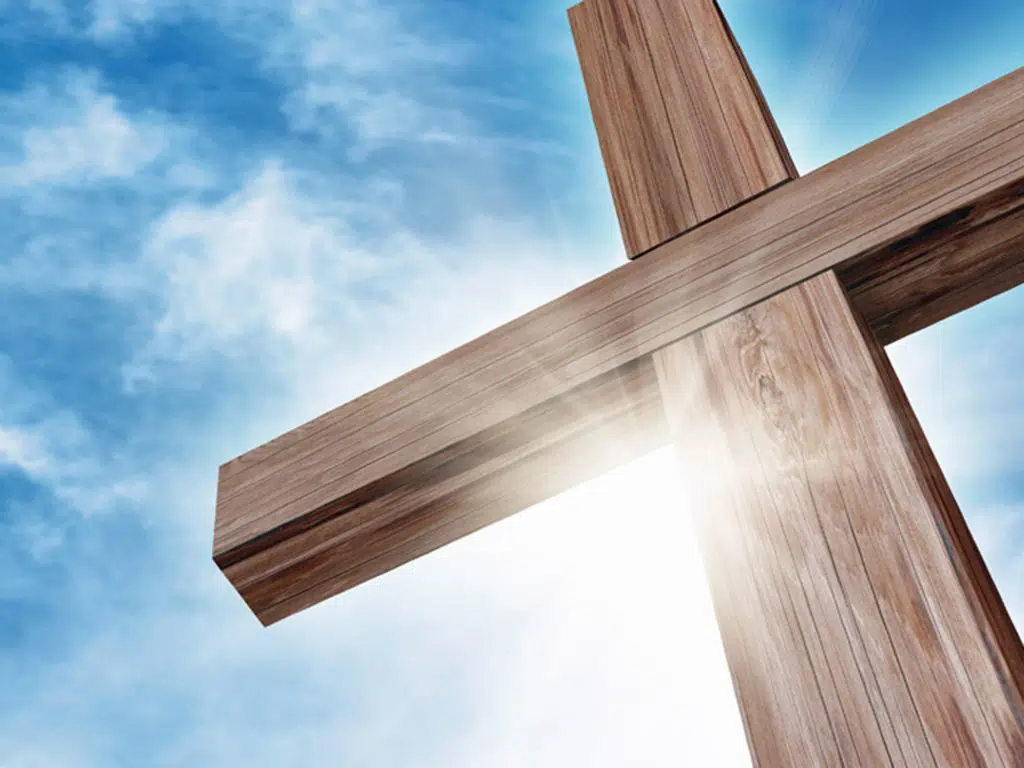Sacramentals are powerful signs of God’s grace in our lives. A popular one we all can embrace is the brown scapular.
Also known as the scapular of Our Lady of Mt. Carmel, the scapular is two pieces of brown or black cloth strung together and worn over the shoulder blades (“scapulae” in Latin). Scapulars go back to around the fourth century, when monks wore full body coverings as a work habit. During the Middle Ages, it became popular among the lay faithful to be associated with religious orders by wearing their scapulars, or work habits.
In 1251, Our Lady appeared to Simon Stock, the prior general of the Carmelite order, and said: “Whoever dies wearing this scapular shall not suffer Eternal Fire. It shall be a sign of salvation, a protection in danger and a pledge of peace. Wear this scapular devoutly and perseveringly. It is my garment. To be clothed in it means that you are continually thinking of me. I, in turn, am always thinking of you and helping you to secure eternal life.”
The vision brought about great devotion among the Carmelites and others to the brown scapular. In 1322, Pope John XXII wrote a bull about the Sabbatine (Latin for Saturday) Privilege attached to the brown scapular, noting that those faithful would be released from purgatory on the first Saturday after their death if they fulfilled four conditions: be invested in the Scapular; wear the scapular as a reminder of a pledge to the Lord through Mary; observe chastity according to one’s state in life; and practice some sort of Marian devotion such as reciting the Little Office of the Blessed Virgin or reciting five decades of the rosary.
To be invested in the brown scapular means being enrolled in the Brown Scapular Confraternity through a simple ceremony called an investiture that can be performed by any priest. You must be invested personally and cannot apply the benefits to another person as the investiture is your personal promise to our Blessed Mother and our Blessed Mother’s personal promise to you. (The members of the Confraternity have the added benefit of sharing in all the spiritual benefits of the Carmelite Order as well.)
In 1917, in what’s known as the Miracle of the Sun, Our Lady of Mt. Carmel appeared in Fatima, Portugal, asking people to make reparation for the sins against her Immaculate Heart.
We can take away several lessons from Our Lady’s appearances and words on the scapular. She knows that we, like Israel in the Old Testament, sometimes turn our backs on God because of hardships, drought, pain, suffering and sin. But, she gave us the scapular that goes over our back and front. This reminds us that even if we turn our back on God, he is always waiting right there in front for us to come back home.
Our Lady told us that the scapular would be a constant reminder that she would be thinking of us, and we should be thinking of her. Carmel means “enclosed Garden” in Hebrew. When we place our hearts in Mary, she always puts us in the presence of her son. This perpetual presence of dwelling with Jesus and Mary is prayer. Our Lady invites us to live in the enclosed garden that God made for us.
Lastly, Our Lady through the scapular invites us to be living witnesses to the true God and to shine brightly for all the world to see just as in the miracle of the sun at Fatima. We are called to be living witnesses to the existence and love of the one true God bringing our world back home to the Father, Son and Holy Spirit who love us.
So, embrace the brown scapular and remember, “God’s got your back.”
Deacon Anthony is a parishioner of St. Timothy Church in Chantilly.



Pentecost Sunday